Tips for photographing Venice, Italy
Practical and creative recommendations for visiting and photographing Italy's historic and captivating city
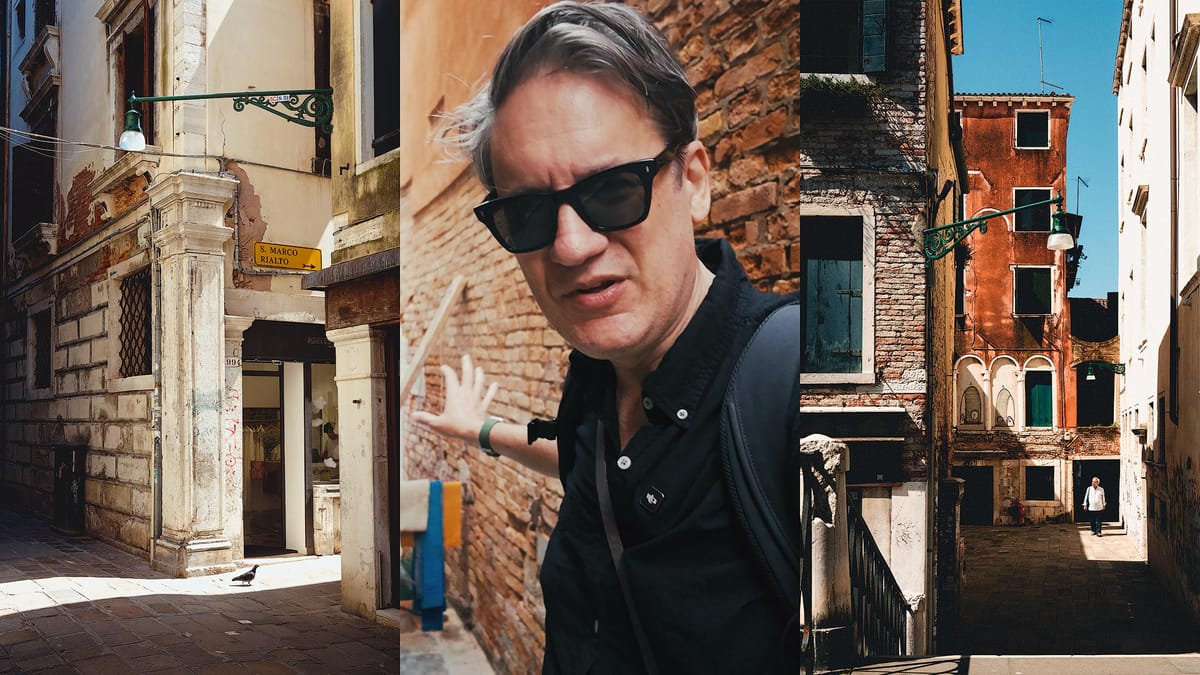
Venice, Italy, is magical, romantic, and unlike any other city on the planet. With its winding canals, historic architecture, museums, and vibrant culture, Venice offers many photographic opportunities. I've traveled to Venice twice in my lifetime, and have explored and experienced nearly everything the city has to offer. In this article, I'll share with you some practical tips when traveling to the historic city, plus gear recommendations and the best times/places to shoot.
Getting around the city
If traveling to Venice through Marco Polo Airport (VCE), the most affordable way to get to Venice is through Alilaguna. At the time of this writing, tickets cost 15 euros one-way or 27 euros round trip. Alilaguna provides ticket kiosks at the airport near baggage claim. Simply purchase either ticket, follow the signs to Alilaguna, and hop on board. The boat stops at all major docks around the Grand Canal.
Second option from the airport is private taxi. These boats cost more (about 125 euros), but carry you directly to the exact dock you need without stops. Far fewer people on board too.
After checking-in at your hotel or Airbnb, there are two main options for getting around: by foot or vaporetto (waterbus). Look for ACTV ticket kiosks at the airport and all major docks around the Grand Canal. ACTV offers daily passes, multi-day passes, and weeklong passes. My family purchased four weeklong tickets and used the vaporettos countless times to get from one area of Venice to another. Google Maps includes ACTV vaporetto times when selecting the public transport directions option. I found the Google Maps data to be accurate and the boats were (surprisingly) always on time as well. Great way to get around the city quickly.
A third option is taking a traghetto, which is a gondola that traverses the Grand Canal. They cost only 2 euros per person and can sometimes be faster than walking to the nearest bridge or waiting for a vaporetto. Traghettos are also a good way to have a gondola experience in Venice for far less money. Worth doing at least once!
You can ditch your tripod (mostly)
In my experience, tripods rarely work in Venice. Too many people, too little space. You might want a tripod for long exposure images of water and sunrise/sunset images from bridges like Academia, but otherwise, I bet you'll spend most (if not all) of your time shooting handheld. I brought a travel tripod to Venice, and it never left my suitcase. Come to think of it, I never saw anyone using a tripod either.
And besides, modern mirrorless cameras with IBIS (in-body image stabilization system) can capture reasonably sharp images at slow shutter speeds, and even if you need to bump ISO to increase sensor sensitivity and achieve proper exposure, you can use Lightroom's Denoise AI, Topaz Photo, DxO PureRaw, and other denoising software apps to remove excess noise. If I traveled to Venice again, I'd leave my tripod at home.
Bring a medium telephoto variable zoom
Unless you have a creative reason for packing and carrying multiple lenses, a medium telephoto variable zoom should be all you need. Preferably one supporting a wide range of focal lengths like 24-105mm or 24-120mm. A 24-70mm lens would also be ideal, but wouldn't reach quite as far. More focal length options will allow you to shoot everything from wide angle to telephoto images of interesting architectural elements and details. One lens also means less gear in your camera bag.
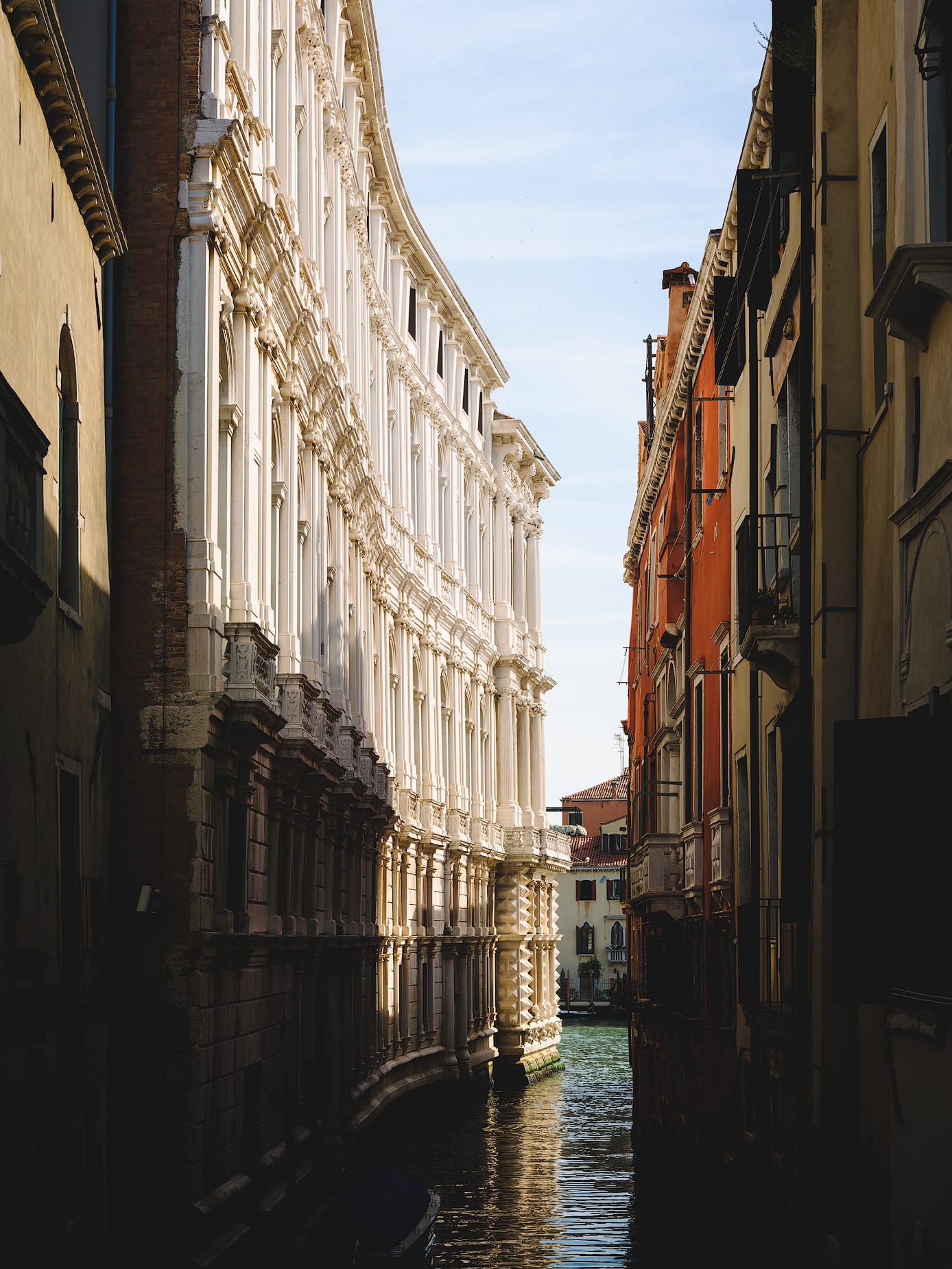
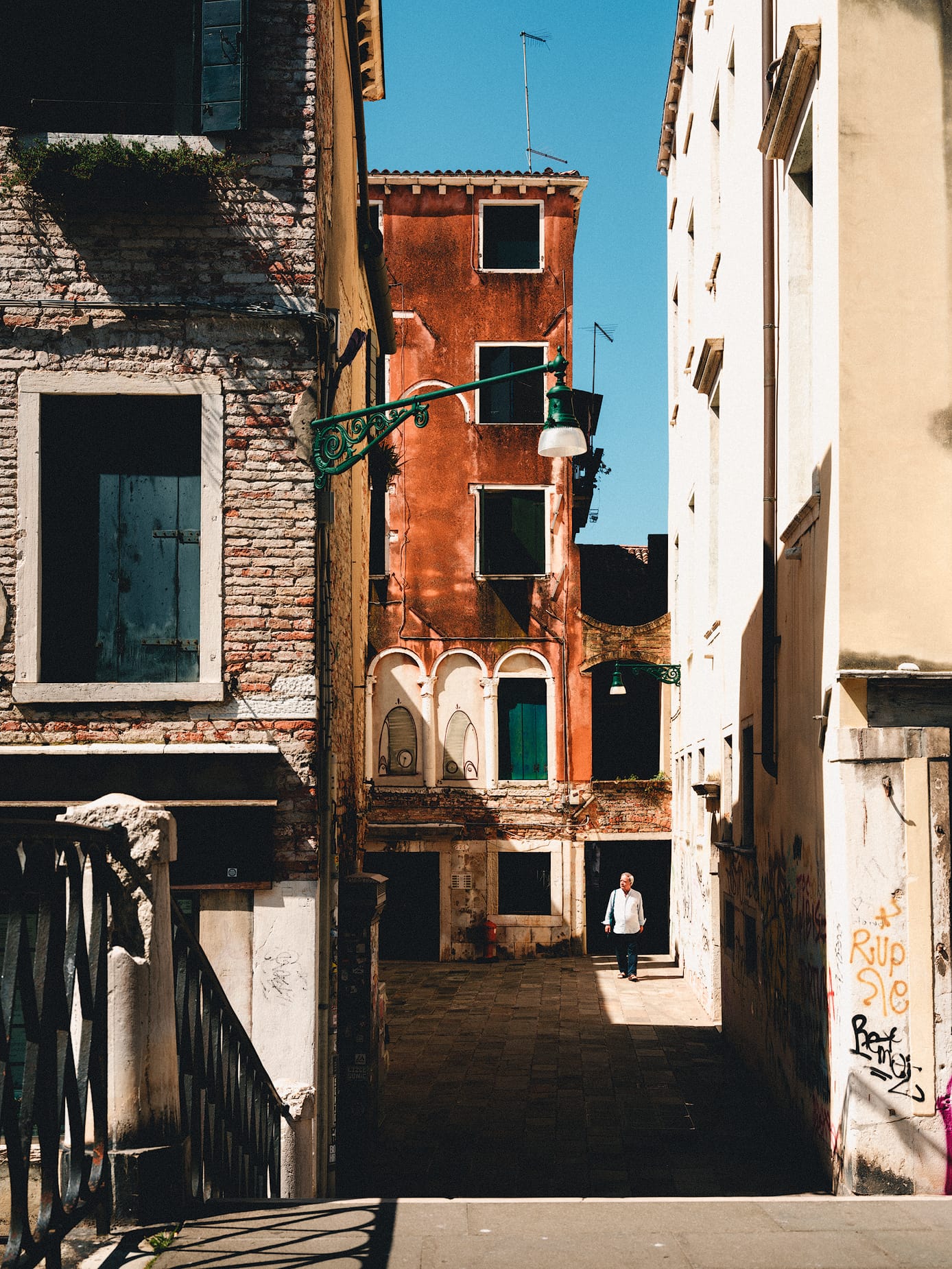

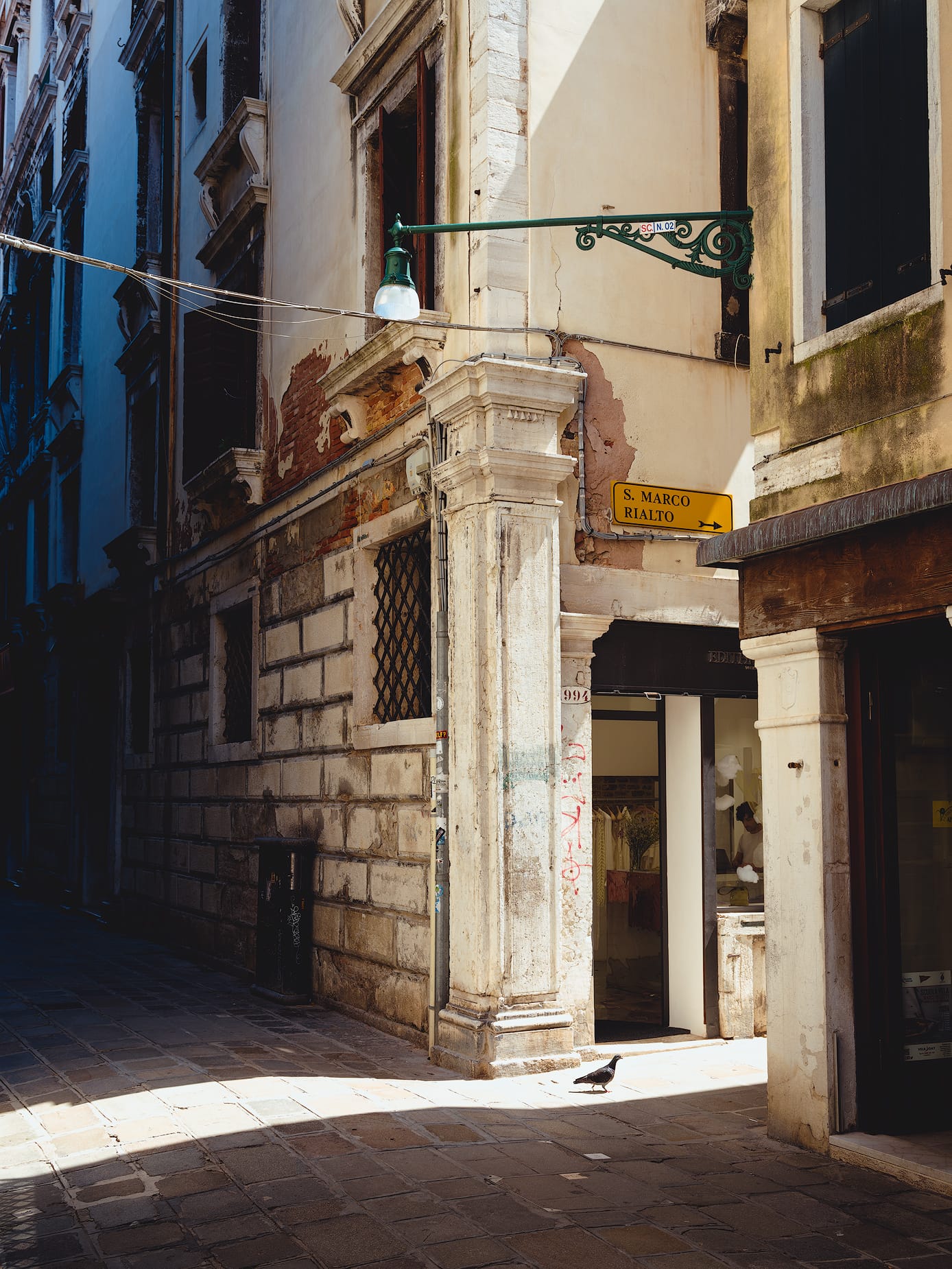
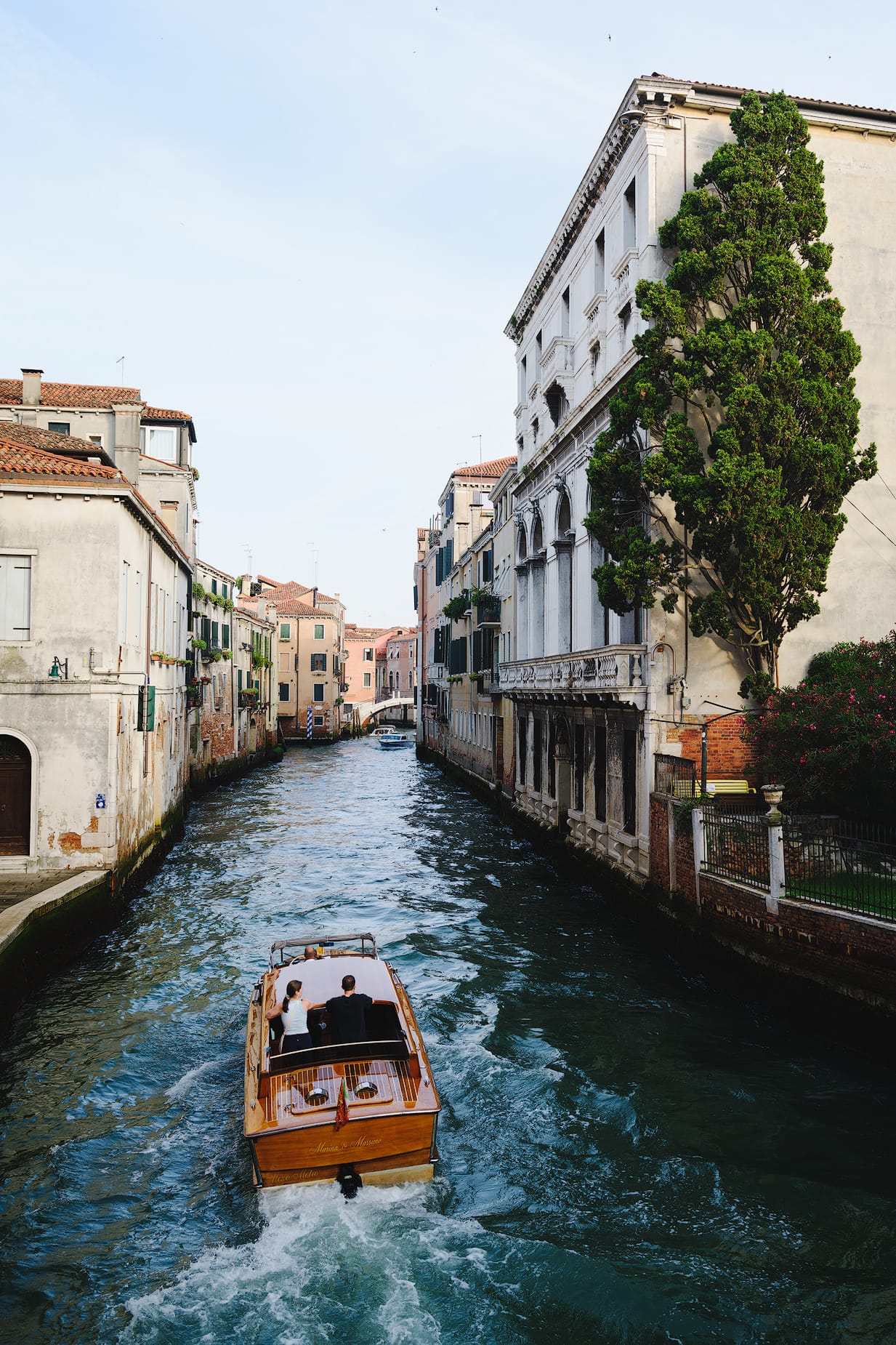
Various images from the historic district of Venice, Italy
Avoid the crowds and get lost
Most tourists congregate around Piazzo San Marco and the Rialto Bridge. These areas are constantly busy from mid-morning to late evening and should be avoided, whenever possible. However, wander away from these areas into the back alleys canals, and you will see far fewer people. In some areas, you may see none at all. These are my favorite areas of Venice, for they're quieter, calmer, and much more fun to explore. I especially like the areas around San Polo and Cannaregio, wandering, and intentionally getting lost. There are many more off-the-beaten-path areas easily accessible by foot or vaporetto if trying to get away from the crowds.
Get up early
Venice is not an early-rising city. From sunrise to mid-morning, the streets are mostly empty, the canals are calm, and the city feels more serene and beautiful. Plus, the light is better! Temperatures are cooler in the summer, too. Additionally, if you're jet-lagged and have yet to adjust your internal clock, you might as well get up, grab your camera, and go shoot. Exploring Venice in the early hours offers a unique and tranquil experience that is the polar opposite of the bustling activity later in the day.
Timing your images
Venice is a lot like photographing slot canyons in the American West, where sunlight does not illuminate interior walls until the sun is high the sky. Otherwise, alleys and canals are dark, dim, and gray. Sunrise and sunset is beautiful around the Grand Canal where there's more open space, but not in the interiors of the city where the buildings often block sunlight.

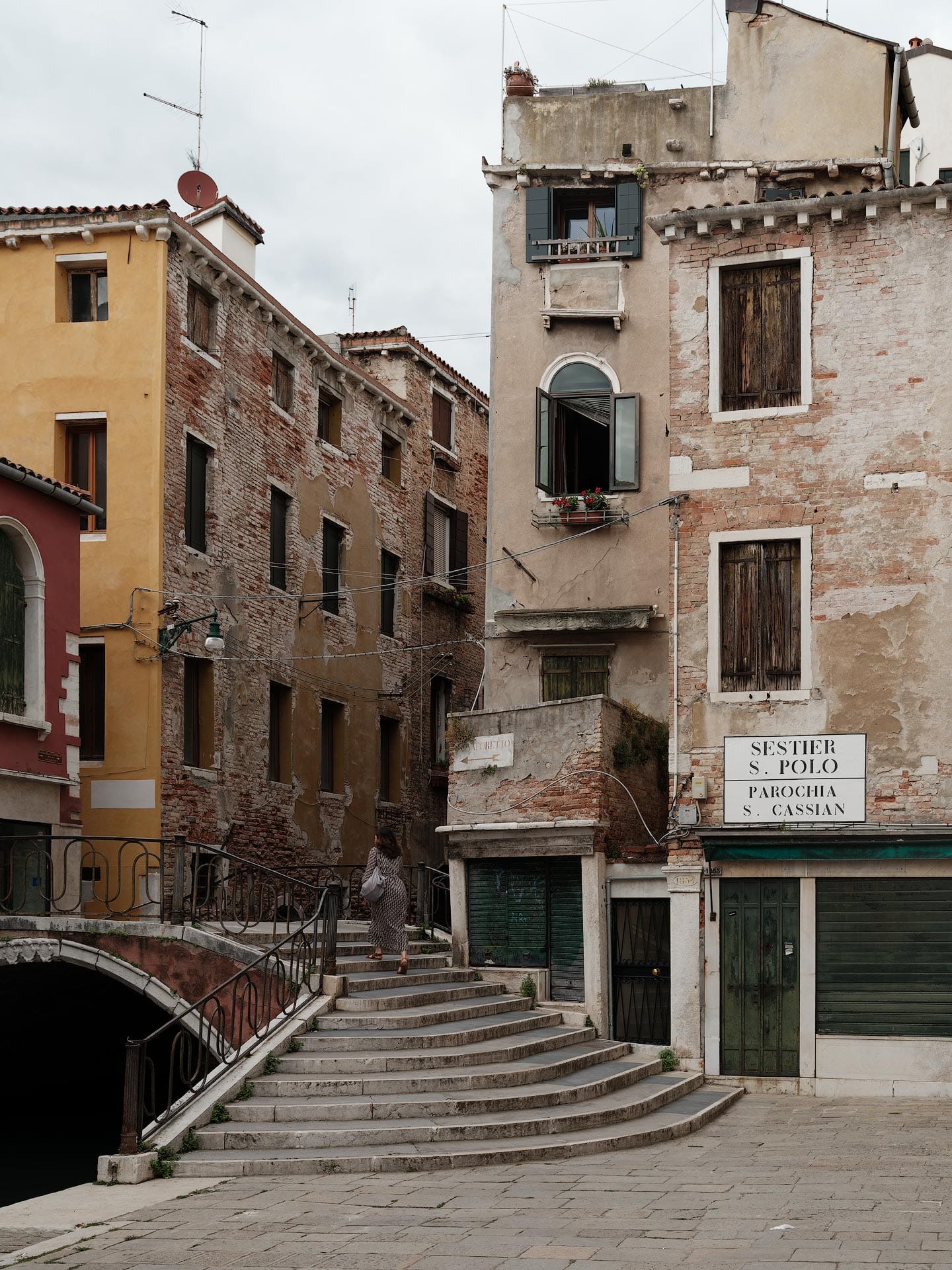
Two examples of gray, drab sunlight in the historic district of Venice, Italy
Obviously, a lot of this will depend on weather. Overcast days will be gray and lifeless no matter where you go. But on a sunny or partly cloudy day, I recommend leaning into the light and strong contrast. Look for canals and streets where sunlight is pushing through and illuminating the architecture (and people) in interesting ways. Pay attention to the geometric shapes created by the light and dark, and find ways to balance and compose them.
As someone who primarily photographs landscapes, I normally avoid harsh midday light, but in Venice a high sun can often turn out better than expected.
Book a gondola ride
Riding in one of Venice's famous gondolas is a "must-do" on many people's bucket lists, and with good reason. Gondolas are romantic, iconic, and offer a great way to see the city. This is especially important because riding in a gondola provides unique angles and vantage points that cannot be accessed any other way.
First, know that gondolas are expensive. Expect to pay around 80-90 euros for 20-30 minutes of ride time during the morning and afternoon, and around 110 euros for the same amount of time in the evening around sunset. If demand is low, you can try negotiating a better price. Bring cash, not cards.
Second, avoid gondolas on the Grand Canal. You will see many gondola drivers along the Grand Canal, especially around San Marco, but this area is incredibly hectic with loads of vaporettos, taxis, cargo vessels, and privately owned boats. The water gets very choppy and rough. While the gondolas do leave the Grand Canal to explore the smaller canals, many other gondolas will be competing for the same space, leading to traffic jams. If you hire a gondola, I recommend doing so away from the Grand Canal, alongside a quiet interior canal where there are fewer people and less chaos.
Third, you don't have to book a gondola in advance. Even in peak travel season, there are many gondola drivers all around the city. It's also good to have some flexibility in your schedule, the weather is good, you need a break, or have time to kill between other plans.
Take day trips to Murano and Burano
Outside Venice there are two islands worth taking day trips to: Murano and Burano. Murano is comparatively larger and more populated, while Burano is smaller and more charming. Both are worth visiting to learn about their respective histories (Murano for glass blowing, Burano for handmade lace), but if I only had time for one island, I'd choose Burano for its bright pastel buildings, humble architecture, and overall walkability. Like Venice, I like getting away from Burano's town center and exploring the residential areas where fewer visitors go.
Best of all, the aforementioned ACTV vaporettos regularly travel to both islands, so you don't need to buy additional tickets to visit Burano and Murano. Great way to also get away from the hustle and bustle of Venice's historic districts.



